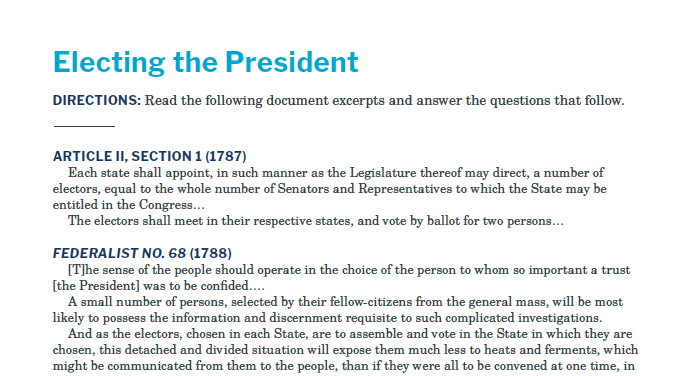Handout A: Electing the President
Electing the President
Directions: Read the following document excerpts and answer the questions that follow.
Article II, Section 1 (1787)
Each state shall appoint, in such manner as the Legislature thereof may direct, a number of electors, equal to the whole number of Senators and Representatives to which the State may be entitled in the Congress…
The electors shall meet in their respective states, and vote by ballot for two persons…
Federalist No. 68 (1788)
[T]he sense of the people should operate in the choice of the person to whom so important a trust [the President] was to be confided….
A small number of persons, selected by their fellow-citizens from the general mass, will be most likely to possess the information and discernment requisite to such complicated investigations.
And as the electors, chosen in each State, are to assemble and vote in the State in which they are chosen, this detached and divided situation will expose them much less to heats and ferments, which might be communicated from them to the people, than if they were all to be convened at one time, in one place….
Talents for low intrigue, and the little arts of popularity, may alone suffice to elevate a man to the first honors in a single State; but it will require other talents, and a different kind of merit, to establish him in the esteem and confidence of the whole Union, or of so considerable a portion of it as would be necessary to make him a successful candidate for the distinguished office of President of the United States.
QUESTIONS
- How are electors selected?
- Where do the electors meet?
- What are three reasons the Founders decided on this method for selecting the President?
- Do any/all of these reasons still apply today? Explain.
